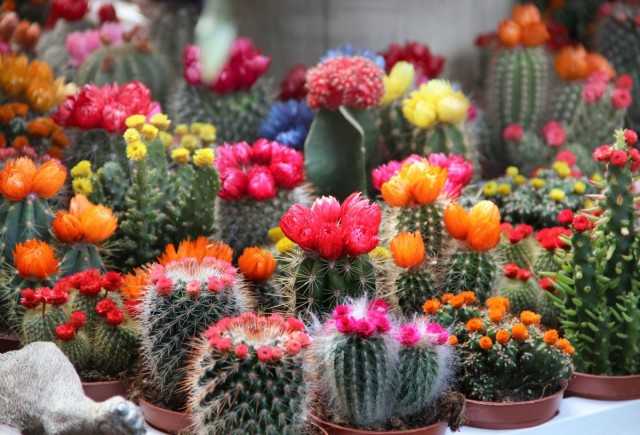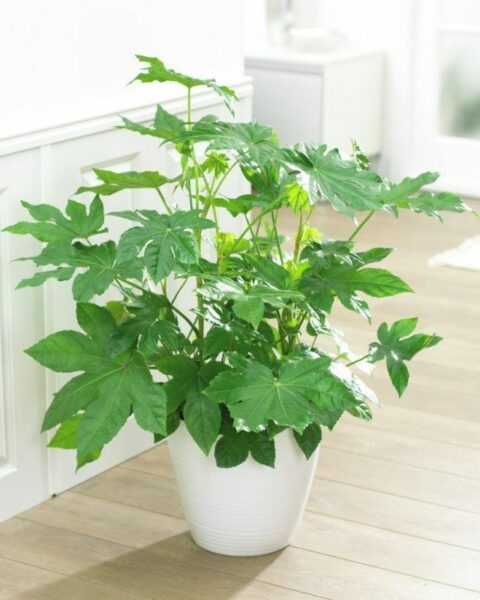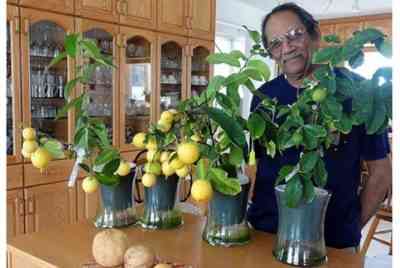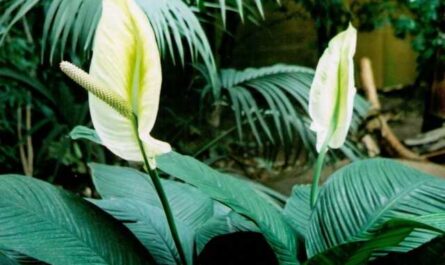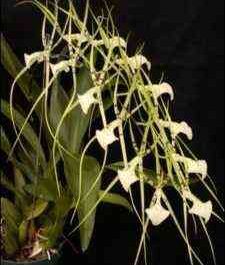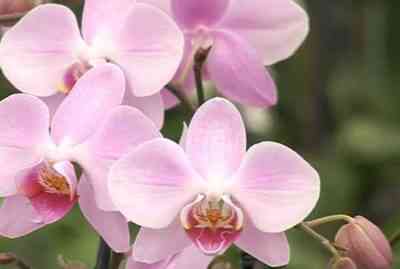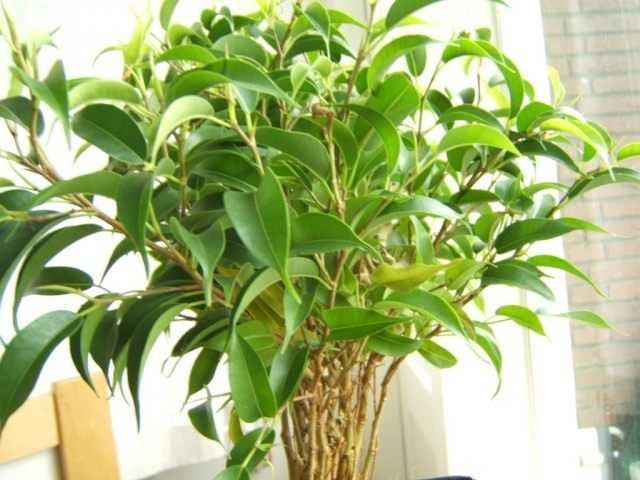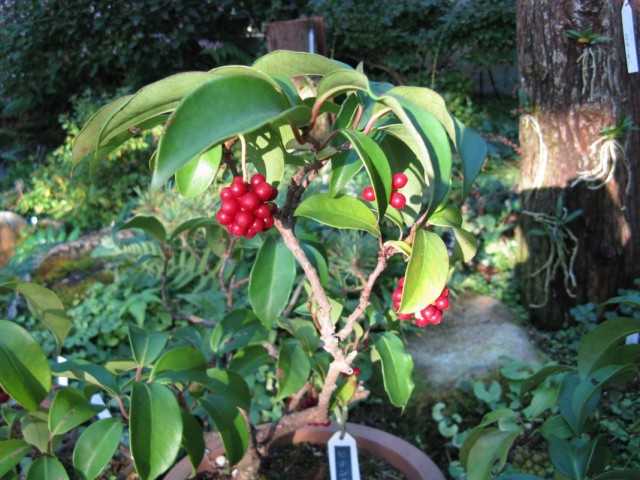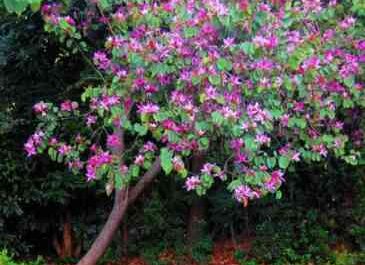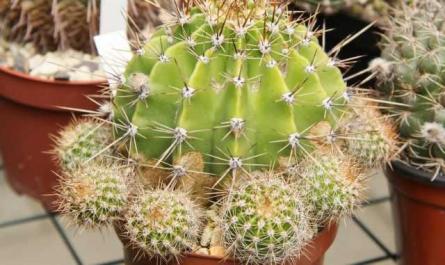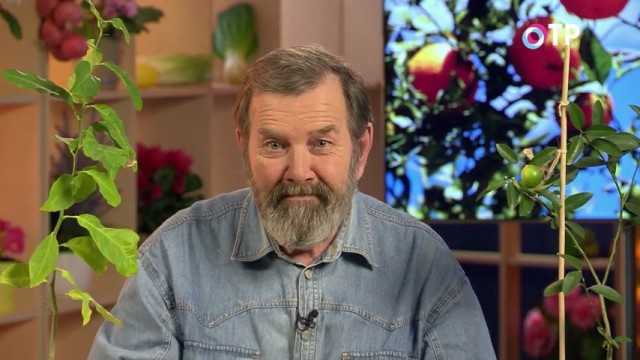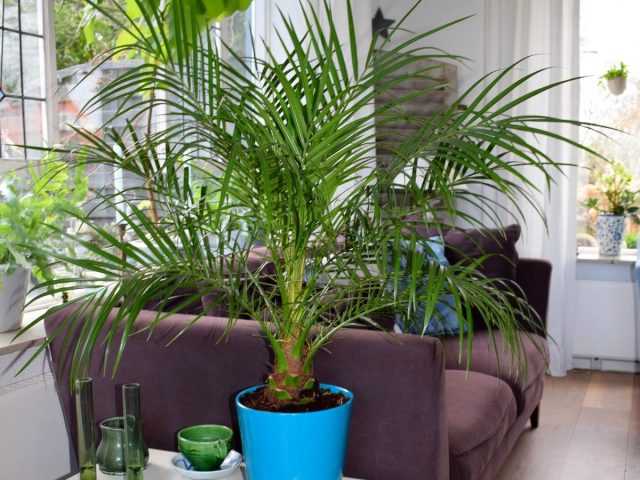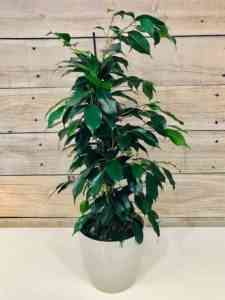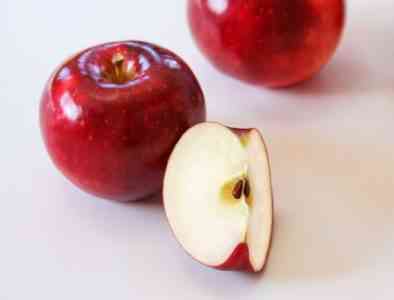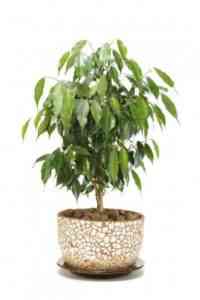Among indoor tuberous crops, you rarely find plants with hanging, filamentous shoots that can grow in the form of ampels. Ceropegia is just such an “exclusive”. But it is considered one of the most original plants not only for its growth form. The fleshy leaves of Ceropegia, shining with noble metals, seem to be a miracle in themselves. And when the plant blooms, the candelabra flowers turn it into an indoor “alien”. An extravagant appearance in ceropegia is combined with its unpretentiousness. And how can you resist such a combination?
Ceropegia – extravagant ampelous succulent
Contents:
Description of the plant
Ceropegia are very original representatives of indoor succulents. Lianas and herbaceous perennials belonging to the genus Tseropegiya (Ceropegia), surprise by the presence of a tuberous lignified rhizome. They seem to strive to amaze with their every feature – from roots to flowering. In nature, ceropegia are common, mainly in Africa, are a bright part of the flora of Madagascar and New Guinea.
Ceropegia are constantly decorative herbaceous perennials. Large, tuberous, over time lignified rhizomes release several filamentous hanging stems. They are creeping, thickened at the nodes, do not branch or branch slightly.
The leaves are arranged in nodes, reaching only 2,5 cm in diameter, always sitting opposite on rather graceful petioles. Their kidney or heart-shaped shape (ovoid in some species and varieties) is easy to recognize, as is their fleshy, thickened texture. In ceropegia, the leaves are always whole, from above they are painted in light shades of green, against the background of which silvery, bronze, steel or purple spots appear.
The metal-shining upper side of the leaves is accentuated by a pinkish back. Small nodules are often formed in the leaf axils. The leaves look like fancy jewelry strung on threads or cords.
The flowering of ceropegia is no less original. Jugs, swollen at the base, speckled exotic flowers up to 2,5 cm long open in the leaf axils. Pink, greenish or light purple “spotted” color only emphasizes the unusual structure, reminiscent of lamps and candles.
Types of indoor ceropegia
Of the 150 species of wild ceropegia, only a few special plants are popular in culture, and only two species are popular as a houseplant.
Ceropegia Wood (Ceropegia woodii) – the most common type of ceropegia with a tuberous rhizome, thin stems and kidney-shaped leaves.
Ceropegia creeping, or Sanderson (Ceropegia sandersonii) – more capricious, large-flowered, with speckled flowers and thickened, curved shoots.
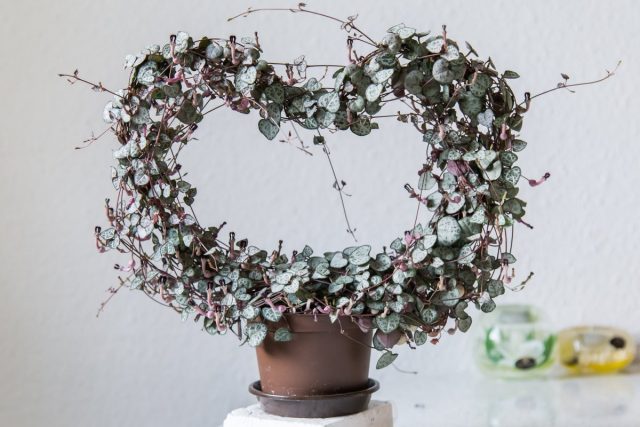
Growing conditions for indoor ceropegia
Ceropegia prefer to grow in bright light. They are comfortable on the southern and partly southern windows, they like soft sunlight. Even the summer noon hours can be dangerous for them only under the condition of hot temperatures and lack of access to fresh air.
Lack of lighting affects the shape of the shoots and the size of the leaves. For almost continuous flowering from autumn, the plant needs to be supplemented or moved to the light.
Ceropegias love nighttime temperature drops (but not sudden jumps from “average” conditions) and they often do well in the same place as popular indoor orchids. In the rooms, they prefer coolness, temperatures from 20 to 23 degrees, rather than heat. But with frequent airing, they endure any temperature. A cool, bright room with temperatures from 12 to 16 degrees Celsius (at least 10 degrees) is considered ideal for wintering ceropegia.
In summer, the plant can be placed outdoors. Regular airing is a mandatory measure when growing ceropegia.

Home care
Ceropegia prefer bottom irrigation, because even drops of water on the tuber lead to rot, but neat procedures will also allow classical top watering.
Ceropegia like stable light moisture, the soil should be allowed to dry out in the upper and partially middle layer, and water should not be allowed to accumulate in the trays. Watering of the plant should be changed depending on the stage of plant development.
During active growth, budding and flowering, ceropegia requires moderate medium watering. But after flowering, it is better to reduce watering in abundance, drying the substrate more strongly. Waterlogging, even a single one, can cause the death of the plant. For ceropegia, only watering with warm, soft water is suitable.
Ceropegias are not moisture-loving, they tolerate dry air perfectly with regular ventilation. In extremely dry air, under conditions of very hot wintering, they will not refuse to install a pallet with peat or pebbles, creating a stable environment, or from neat spraying with fine spray nozzles. Spraying is also used as a measure to stimulate the release of buds after a dormant period.
For ceropegia, especially kept in winter in comfortable cool conditions, feeding is often carried out only in the periods between flowering. The optimal strategy for the plant is considered to be regular, but moderate feeding from March to the end of September. Frequency – 2 times a month, but half the dose of fertilizers. In the first year after transplanting, feeding is not necessary.
In case of loss of leaves, exposure of shoots or loss of decorativeness, the stems can be safely cut off, because the plant will release several young ones to replace. Usually every 5 years the plant is replaced with a new one grown from cuttings.
These bizarre ampels are often plagued by felts and aphids. You can fight insects only with biological agents or insecticides. If kept in very dry air or if the collection is infested, the ceropegia can be affected by spider mites. But this pest can be dealt with by simply washing the leaves and shoots.
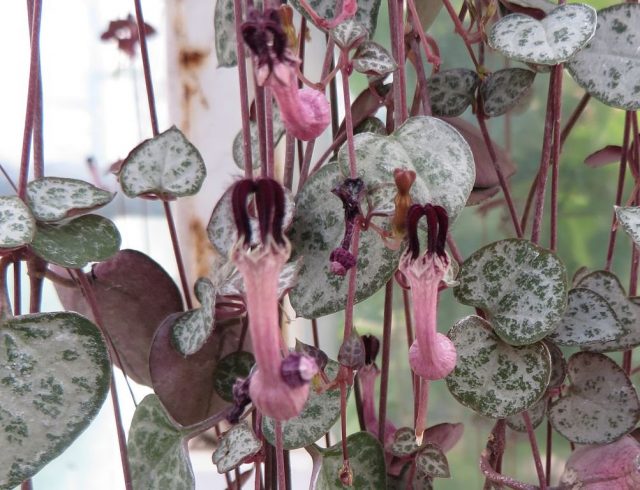
Transplant, containers and substrate
This plant is transplanted as needed, focusing on growth, in February or March. For ceropegia, compact, small containers corresponding to the size of the tuber or family are needed (the distance to the walls is from 2 to 4 cm). Ceropegia can be grown together with other succulents in complex compositions.
Ceropegias require the selection of very light, breathable soils without the slightest risk of compaction. For them, a special substrate for succulents with the addition of leafy soil or a universal substrate is ideal, to which at least a third of loosening additives and sand have been added. Optimum pH values are from 4,5 to 6,0.
For ceropegia, a high drainage layer and large drainage holes are required. They are transplanted, keeping the same level of deepening. They do not destroy the earthen lump, transferring the plants very carefully.
Read also our article 10 best ampelous succulents.
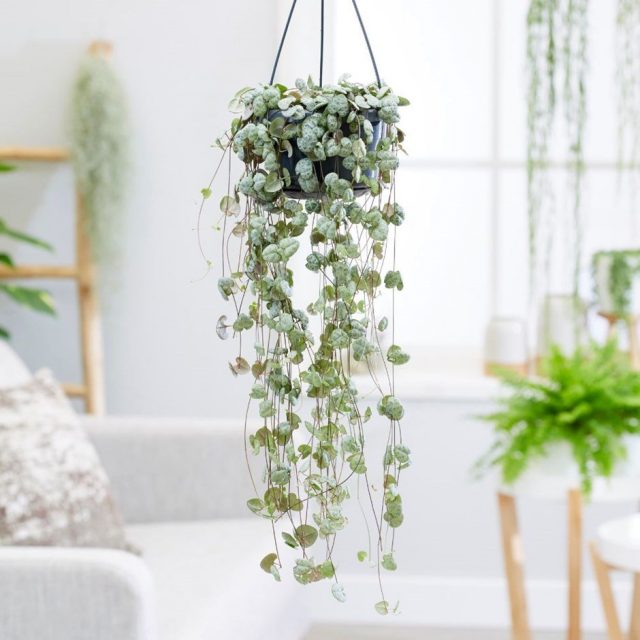
Reproduction of ceropegia
New ceropegia can be obtained from air nodules, which are slightly pressed into the soil and germinated under a hood in the warmth. But the more popular option is layering fixed in small pots or rooting apical and stem cuttings.
Cutting of this plant does not require any tricks: the tops or segments of shoots with 2-3 internodes, ideally with air nodules, are placed in “rings” on the soil, fixing the nodes so that they are in contact with the substrate. The slices are directed upward, preventing immersion in the soil.
For rooting, it is sufficient to maintain a light moisture content of the substrate. After rooting, both nodules and cuttings are planted in 2-5 plants in one pot, guided by the standard rules for the selection of wide, shallow containers.
Also, ceropegia can be propagated by division, cutting off long shoots to speed up the rooting of the separated parts.




